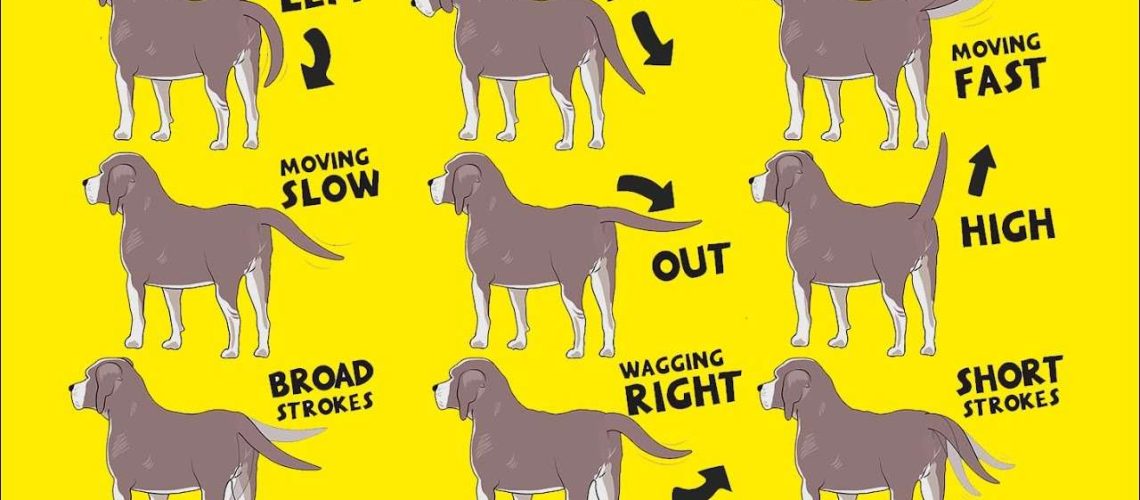Key Takeaways:
- Tail wagging is not always a sign of happiness in dogs. It can also indicate stress, fear, or aggression.
- The position and movement of the tail can provide important clues about a dog's emotional state.
- A relaxed and loose tail wag typically indicates that a dog is feeling friendly and comfortable.
- A stiff and high-held tail wag may suggest that a dog is alert, dominant, or potentially aggressive.
- It is crucial to consider other body language signals along with tail wagging to accurately interpret a dog's emotions and intentions.
Have you ever wondered what your furry friend is trying to tell you when their tail starts wagging? Understanding dog body language, specifically tail wagging, can provide valuable insights into your dog's emotions and intentions. By delving into this subject, you'll not only deepen the bond with your canine companion but also ensure their well-being. Dogs communicate primarily through body language, and their tails are like a secret code that reveals their true feelings. In this article, we will explore the fascinating world of dog tail wagging and uncover the hidden messages behind it. Get ready to decode your dog's wag and discover a whole new level of connection with man's best friend. So let's dive in!
What does it mean when a dog wags its tail?
Understanding a dog's emotions through tail wagging
When a dog wags its tail, it is usually a sign that the dog is happy and friendly. Dogs use their tails to communicate their emotions to humans and other animals. However, it's important to remember that not all tail wags are friendly or happy. It's essential to pay attention to other cues from the dog's body language to fully understand what they are trying to convey.
Different types of tail wagging and what they indicate
A dog's tail can wag in different ways, and each type of wag can indicate a different emotion. For example:
- A broad, loose wag with the whole body moving usually means the dog is happy and excited.
- A slow, stiff wag with the tail held high may indicate that the dog is feeling dominant or aggressive.
- A low, tucked tail with fast wagging can suggest fear or anxiety in the dog.
Other body parts that help understand a dog's feelings
Tail wagging is just one part of a dog's body language. To fully understand how a dog is feeling, it's important to pay attention to other body parts as well. Here are some additional cues:
- Ears: Erect ears may indicate alertness or aggression, while relaxed ears signify calmness.
- Mouth: A relaxed mouth with slightly open lips suggests friendliness, while bared teeth can be a sign of aggression.
- Posture: A relaxed posture with loose muscles typically means the dog is at ease, while tense muscles and raised hackles can indicate fear or aggression.
The importance of paying attention to a dog's body language
Understanding a dog's body language is crucial for both our safety and the well-being of the dog. By observing their tail wagging and other cues, we can determine if a dog is comfortable or potentially aggressive. This knowledge allows us to adjust our behavior accordingly and avoid situations that may provoke negative reactions from the dog.
Ensuring our safety by understanding and respecting a dog's body language
To ensure our safety around dogs, it's important to respect their body language and understand what they are trying to communicate. If a dog is showing signs of fear or aggression, it's best to give them space and avoid approaching them. Always ask the owner for permission before interacting with a new dog, and never disturb a sleeping or eating dog. By being aware of a dog's body language, we can create safer interactions and build positive relationships with our furry friends.
Understanding a dog's emotions through tail wagging
When a dog wags its tail, it is often seen as a sign of happiness and friendliness. However, tail wagging can actually convey a range of emotions and intentions. It's important for us to understand what our furry friends are trying to communicate through their wagging tails.
Dogs use their tails as a way to express themselves and interact with the world around them. The position, speed, and direction of the wag can provide valuable insights into their emotional state. For example, a high and fast wag usually indicates excitement or joy, while a low and slow wag may suggest caution or fear.
Types of tail wagging:
- A broad sweeping motion: This is typically associated with happiness and friendliness. It shows that the dog is relaxed and comfortable in its environment.
- A stiff, rapid wag: This type of wag may indicate that the dog is feeling threatened or agitated. It's important to approach with caution in such situations.
- A low, slow wag: This type of wag suggests that the dog is unsure or anxious. It's best to give the dog some space and avoid any sudden movements.
Interpreting tail positions:
The position of a dog's tail can also provide valuable information about its emotional state:
A(High) -->|Excitement/Joy| B
A(Middle) -->|Neutral/Calm| C
A(Low) -->|Caution/Fear| D
In addition to tail wagging, it's important to pay attention to other body parts that can help us understand a dog's feelings.
Not all tail wags from dogs are friendly and happy
While tail wagging is often associated with happiness and friendliness, it's important to remember that not all tail wags from dogs are positive. Dogs can wag their tails for various reasons, including fear, aggression, or even as a warning sign.
It's crucial for us to be able to differentiate between a friendly wag and a potentially dangerous one. This requires observing the context in which the wag occurs and paying attention to other accompanying body language cues.
Different types of tail wagging and what they indicate
Tail wagging is not a one-size-fits-all behavior. Dogs have different ways of wagging their tails, and each type can convey a specific meaning or emotion.
A broad sweeping motion usually indicates happiness and friendliness. It shows that the dog is comfortable and content in its surroundings. On the other hand, a stiff, rapid wag may suggest agitation or potential aggression. It's essential to be cautious when encountering this type of tail wag.
A low, slow wag often signifies caution or fear. It's important to approach dogs with this type of tail movement gently and give them space to feel more at ease.
Other body parts that help understand a dog's feelings
Tail wagging is just one aspect of a dog's body language that can provide insights into its emotions. Other body parts also play an essential role in understanding how a dog feels.
The ears, for example, can tell us if a dog is alert or relaxed. Forward-facing ears indicate attentiveness, while flattened ears may suggest fear or submission.
The posture of a dog can also reveal valuable information about its emotional state. A relaxed posture with loose muscles typically indicates comfort and contentment, while a tense or stiff posture may indicate fear or aggression.
The importance of paying attention to a dog's body language
Paying attention to a dog's body language is crucial for effective communication and ensuring the well-being of both humans and dogs. By understanding their nonverbal cues, we can better interpret their emotions and respond appropriately.
Ignoring or misinterpreting a dog's body language can lead to misunderstandings, potential conflicts, or even accidents. It's our responsibility as pet owners and animal lovers to educate ourselves about canine body language and always approach dogs with respect and caution.
Ensuring our safety by understanding and respecting a dog's body language
Understanding and respecting a dog's body language is not only important for our own safety but also for the well-being of the dogs themselves. Dogs rely on nonverbal communication to express their needs, emotions, and boundaries.
By being aware of their signals and responding appropriately, we can create a safer environment for both humans and dogs. This includes giving them space when they show signs of discomfort or fear, avoiding sudden movements that may startle them, and always asking permission before approaching an unfamiliar dog.
In conclusion, a dog's tail wagging can communicate different emotions and intentions. It is important for us to understand their body language to better interact with them and ensure their well-being.
What does it mean when a dog is wagging their tail?
Dogs use tail wagging to express various emotions such as joy, nervousness, fear, anxiety, submission, and excitement. When a dog is calm and at ease, its tail will typically rest in a specific position, which can vary based on the dog's breed.
Do different tail wags mean different things?
In a previous study, the same group of scientists discovered that dogs wag their tails to the right when they see something they want to approach, like their owner. However, they wag their tails to the left when faced with something they want to move away from, like another dog displaying aggressive behavior.
What does it mean when a dog wags its tail side to side?
Dogs frequently wag their tails as a way to show their enthusiastic energy. In a study conducted in 2018, it was discovered that dogs wag their tails in a loose side-to-side motion to convey friendliness and excitement. Additional research has confirmed the connection between tail wagging and positive social behavior in dogs.
Why do dogs wag their tails when resting?
When dogs wag their tails while sleeping, it is an indication of their emotional state during rest. Similar to when they are awake, a wagging tail signifies their mental state. Here is a compilation of potential emotions they may be experiencing and the reasons behind their tail wagging while asleep, including happiness.
Do dogs wag their tails when happy?
When a dog is showing signs of happiness or friendliness, their tail is typically in a neutral position, parallel to the ground. It can also be slightly up or down and wagging at a moderate speed. The tail is relaxed and wagging from side to side in a sweeping motion.
What does an aggressive dog tail wag look like?
A dog displaying aggressive behavior typically has a rigid tail that is either raised upwards or even arched over its back. The tail may wag or shake slightly from side to side, and the dog's hair may be raised or bristled.

















